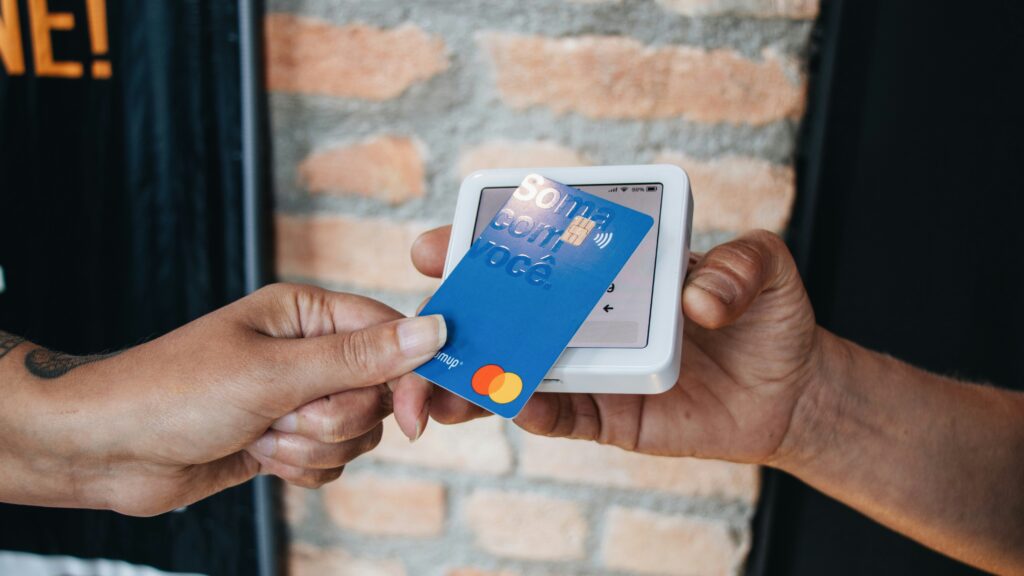From cash to digital solutions: unlock various payment methods
Payment methods serve as vital tools that enable the seamless transfer of funds between individuals, businesses, and institutions.Ranging from the simplicity of cash transactions to the sophistication of digital payment solutions, these methods cover a broad spectrum of options that cater to different preferences and needs. Specifically, popular payment methods include cash, checks, credit and debit cards, electronic bank transfers, and mobile payment systems, each of which offers its unique benefits and drawbacks.
Moreover, these payment options are crucial for facilitating secure, efficient transactions, as they provide flexibility and convenience for consumers while helping businesses operate smoothly. For instance, cash transactions offer instant payment without the need for digital processing, whereas credit and debit cards provide convenience and allow for greater spending flexibility. In addition, electronic transfers and mobile payments have further revolutionized transactions, enabling near-instant fund transfers and supporting the growing trend toward contactless payments. Thus, understanding these diverse methods can empower consumers and businesses alike to make informed financial decisions.By offering multiple payment options, businesses can meet diverse customer preferences, enhance the customer experience, and ultimately drive more sales.
In this article, we’ll explore the various payment methods available, examining their advantages, challenges, and the factors to consider when choosing the right options for your business or personal transactions.

Importance of effective payment solutions for businesses and consumers
Effective payment solutions offer significant advantages for both businesses and consumers, creating a win-win situation that enhances overall transaction experiences.
For businesses, efficient payment methods streamline operations by ensuring smoother cash flow, allowing them to access funds quickly and manage finances more effectively. Lower transaction costs associated with certain payment options, such as electronic transfers and mobile payments, can also reduce overhead, positively impacting profitability. Additionally, by providing multiple payment methods, businesses improve customer satisfaction, making it easier for clients to choose how they want to pay, which can lead to repeat business and increased loyalty.
On the consumer side, secure and convenient payment options simplify daily transactions, giving them confidence in the safety of their funds and personal data. Options like mobile payments and digital wallets enhance convenience, allowing for quick, hassle-free purchases in-person and online. This ease of use fosters a positive shopping experience, encouraging consumers to transact more frequently and with greater peace of mind.

Overview of payment services
Introduction to cash management
Nordea, a prominent financial services provider in the Nordic region, delivers comprehensive cash management solutions designed to optimize cash flow for businesses of all sizes. Their services include a range of payment options, efficient account management tools, and advanced liquidity management solutions, all crafted to meet diverse business needs. By simplifying financial operations, Nordea enables companies to enhance their cash flow visibility, improve control over funds, and achieve greater operational efficiency. With Nordea’s expertise, businesses can focus on growth while confidently managing their financial activities in a streamlined and secure manner.
Overview of payment services tailored for businesses
Nordea, a leading financial services provider in the Nordic region, offers robust cash management solutions tailored to optimize cash flow for businesses of all sizes. Their services encompass a variety of payment options, account management tools, and liquidity management solutions, designed to address diverse business requirements. By streamlining financial operations, Nordea enhances cash flow visibility, improves fund control, and boosts overall operational efficiency. With Nordea’s support, companies can concentrate on growth while efficiently and securely managing their financial activities. These comprehensive solutions empower businesses to navigate their financial needs with confidence and ease..
Overview of payment methods in Denmark
Denmark boasts a well-developed payment system infrastructure, providing a wide variety of payment options that include cash, credit and debit cards, mobile payments, and electronic transfers. The country’s strong emphasis on digital payments highlights its commitment to convenience, security, and innovation in financial technology. With a tech-savvy population, Denmark has seen mobile payments and electronic transfers become increasingly popular, minimizing the reliance on cash and streamlining transactions across sectors. This modern approach not only simplifies payments for consumers but also supports efficient business operations, making Denmark a leader in adopting secure and accessible payment technologies.
Digital payment usage
Shift towards digital payments
Recent years have seen a significant shift towards digital payment methods, driven by advancements in technology and evolving consumer preferences. Digital options, including mobile payments and online banking, are increasingly popular, providing more convenience than traditional payment methods.
Statistics on digital payment prevalence in Europe
Denmark leads in digital payment adoption, outpacing many other European nations. This high rate of usage reflects the country’s strong digital infrastructure and high consumer confidence in electronic payments.
Mobile payments: popularity, wallet payments, and MobilePay’s role
In Denmark, mobile payments have surged in popularity, with MobilePay leading the way. MobilePay allows users to make quick, secure payments using smartphones, whether for peer-to-peer transfers, in-store purchases, or online shopping. This app is a staple in the Danish digital payment ecosystem, offering convenience and versatility.

Types of payment methods
Standard payment methods: advance payment, payment on delivery, invoice payment, credit card, PayPal, direct debit
Various payment methods cater to different transaction needs:
- Advance payment: Buyers pay in advance, offering sellers a layer of security.
- Payment on delivery: Payment is made upon receiving the product, ensuring buyers’ satisfaction.
- Invoice payment: Payment follows the receipt of an invoice, commonly used in business transactions.
- Credit card: Widely accepted for secure online and in-store purchases.
- PayPal: An online platform known for secure e-commerce transactions.
- Direct debit: Automatically deducts funds for recurring payments, often used for subscriptions.
Domestic payments: solutions for efficient domestic transactions
Nordea offers flexible domestic payment solutions, including instant payments, automated clearing house (ACH) transfers, and direct debits, enabling businesses to optimize cash flow management and minimize payment delays.
International payments: cross-border payment solutions
Nordea’s international payment services empower businesses to manage cross-border transactions with ease, providing timely payments while mitigating currency risks. Leveraging a vast global network, Nordea offers seamless international payment processing, allowing companies to conduct business abroad with confidence and efficiency. These services help businesses navigate foreign exchange complexities and ensure that funds reach their destinations securely and on time. By supporting smooth international transactions, Nordea enables companies to expand their global reach and manage financial operations effectively across borders.
Payment systems and infrastructure
Retail payment systems: straksclearing, intradagclearing, sumclearing
Denmark’s retail payment infrastructure features multiple systems designed for efficient and secure transactions:
- Straksclearing: A real-time payment system that enables instant transfers between banks, providing immediate availability of funds for recipients and supporting Denmark’s growing demand for rapid transactions.
- Intradagclearing: A same-day clearing system that processes payments within business hours, making it ideal for transactions that require quick settlement but not immediate transfer.
- Sumclearing: A batch-processing system designed for handling high volumes of payments. Transactions processed through Sumclearing are typically settled the following business day, making it suitable for routine, large-scale payments.
These systems together support Denmark’s robust, reliable payment landscape, catering to diverse transaction needs across the economy.
Ownership and operation of payment systems
Denmark’s central bank owns and operates the nation’s payment systems, prioritizing security, reliability, and operational efficiency. By maintaining direct control, the central bank ensures that these systems uphold high standards of data protection and transaction integrity. To stay aligned with technological advancements and evolving user demands, the central bank regularly implements upgrades, enhancing functionality and resilience. This proactive approach allows Denmark’s payment infrastructure to adapt to changing financial landscapes and continue providing seamless, secure transactions for both individuals and businesses.
Security and compliance measures
Nordea places a high priority on security in its payment processing systems, employing a comprehensive strategy that includes encryption, robust authentication measures, and continuous transaction monitoring. These practices are designed to prevent fraud and ensure compliance with regulatory standards, thereby safeguarding customer data and maintaining trust. By utilizing advanced security technologies, Nordea protects sensitive information during transactions, ensuring that customers can conduct their financial activities with confidence. This commitment to security not only enhances the overall user experience but also reinforces Nordea’s reputation as a reliable financial partner in an increasingly digital landscape.
Corporate access and integration
Corporate access features
Nordea’s corporate access solutions provide businesses with secure access to accounts and payment services. Real-time account data, customizable reports, and multi-user access help streamline financial management.
ERP & TMS integration
Nordea’s solutions integrate with enterprise resource planning (ERP) and treasury management systems (TMS), automating payment processes, optimizing cash flow, and improving visibility into fi
Nordea’s solutions seamlessly integrate with enterprise resource planning (ERP) and treasury management systems (TMS), providing businesses with a streamlined approach to managing their financial operations. By automating payment processes, these integrations reduce manual effort and minimize the risk of errors, leading to greater efficiency. Furthermore, they optimize cash flow by ensuring that payments are executed promptly and accurately, while enhancing visibility into financial data. This comprehensive overview of finances allows businesses to make informed decisions quickly and effectively. With Nordea’s integrated solutions, companies can improve their operational efficiency and strengthen their financial management capabilities, ultimately supporting their growth objectives.
Facilitating electronic transactions
Nordea’s eGateway provides a robust and reliable platform for facilitating electronic transactions, accommodating a wide range of payment methods, including credit cards, direct debits, and electronic transfers. Above all, This versatile service significantly enhances businesses’ payment capabilities, allowing them to cater to diverse customer preferences and streamline their transaction processes. By offering a seamless and efficient customer experience, eGateway not only simplifies payment handling but also helps businesses improve their overall service quality. Addition,With its secure infrastructure and user-friendly interface, Nordea’s eGateway empowers companies to confidently manage their electronic transactions while fostering customer satisfaction and loyalty.
Instant payments and new solutions

Impact of instant payments
Instant payments allow for rapid fund transfers, boosting cash flow and customer satisfaction by reducing settlement times. This shift towards instant transactions is transforming the payment landscape, aligning with modern expectations.
Collaboration with central banks
Central banks and financial institutions collaborate to build the infrastructure required for instant payments, ensuring reliable and efficient systems.
Mobile payment solutions adoption
The popularity of mobile payment options like MobilePay reflects the growing consumer preference for digital solutions, enabling in-store, online, and peer-to-peer transactions directly from mobile devices.
Payment terms and conditions
Importance of clear payment terms
Payment terms govern the sale process, outlining deadlines, discounts, and penalties. These terms are crucial for managing cash flow and encouraging timely payments.
Overview of common payment conditions
Typical payment terms include:
- Payment within 30, 60, or 90 days of invoicing.
- A 2% discount for payments made within ten days; full amount due in 30 days otherwise.
- Immediate payment upon receipt of the invoice.
These terms help manage accounts and ensure timely cash flow.
Legal implications of default
Defaulting on payment terms can lead to late fees, interest charges, and potential legal action. Clear communication of terms can help businesses avoid such disputes and maintain financial stability.
FAQs
1. What are the main types of payment methods?
The primary payment methods include advance payments, payments on delivery, invoice payments, credit cards, PayPal, and direct debits. Each option serves different needs, accommodating various transaction preferences.
2. How do instant payments differ from traditional methods?
Instant payments transfer funds almost immediately, unlike traditional methods with longer processing times. They improve cash flow, reduce delays, and allow instant access to funds.
3. What security measures does Nordea use to prevent fraud?
Nordea uses encryption, authentication protocols, and continuous monitoring to secure transactions, protecting against payment fraud and enhancing customer data security.
4. How does cash pooling aid businesses in liquidity management?
In this case, cash pooling centralizes cash management by consolidating balances, optimizing liquidity, and reducing costs, which enhances overall financial efficiency for businesses.
5. What benefits come from integrating ERP and TMS with Nordea’s payment solutions?
Integrating ERP and TMS with Nordea’s payment solutions automates transactions, improves cash flow, and provides enhanced visibility, aiding efficient financial management.


